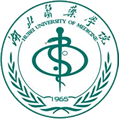Study in Hubei University of Medicine About Hubei University of Medicine & Study in hbmu
About Hubei University of Medicine
Hubei University of Medicine (HUM) is located in the center of Shiyan, the Motor City, in Hubei Province, People’s Republic of China. Shiyan boasts several tourist attractions such as Wudang Mountain: a sacred place of Taoism, Danjiangkou Reservoir: the largest artificial freshwater lake in Asia and, Shengnongjia Forest.
HUM was founded in 1965. In 1996, it was among the first to pass the National Undergraduate Teaching Quality Assessment (TQA) accreditation organized by the State Education Commission. In 2006, it was evaluated as "Excellent" in the Undergraduate TQA conducted by the Ministry of Education. HUM’s facilities cover 421,800 square meters, of which 117,000 square meters are for teaching and administration. Its fixed assets amount to RMB one billion. Its teaching and research equipments are valued at over RMB100 million. Its library has a collection of 838,400 volumes.
HUM has over 15,000 full-time students and over 1,000 faculty and staff. It offers 12 undergraduate programs, covering medicine, science, management and engineering.The current undergraduate programs include Clinical Medicine, Nursing, Anesthesiology, Medical Imaging, Pharmacy, Pharmaceutical Engineering, Medical Laboratory Science, Dentistry, Public Health Administration, Information Management & Systems, Rehabilitation Therapy, and Bioscience. The university hosts two nationally recognized majors, five provincially recognized majors, seven provincially recognized courses, three provincial teaching model centers, and five first rate level three hospitals. The five affiliated hospitals are the highest Level Three hospitals in the country, with 6 million out-patients and 300,000 in-patients annually. Along with emphasis on undergraduate education, HUM is developing graduate, overseas students, and continuing education.
HUM has six provincially recognized disciplines, four Chutian Scholars Programs, two authorized master’s programs, one national laboratory, two provincially recognized laboratories, and laboratories researching regenerative medicine, reproduction medicine and organ transplantation, as well as a model center for collaboration between industry, universities and researches. In the past three years, researchers at HUM have been awarded 62 provincial research grants and 27 provincial research prizes. 108 research projects were accredited, and 36 patents were awarded. About 350 articles were published in SCI, EI, and ISTP, of which articles published in Nature and Cell Metabolism drew great attention at home and abroad.
HUM has cultivated international relationships by exchange and collaboration with universities in America, England, Australia, Japan, Korea and other nations, promoting the development of disciplines and internationalization.

